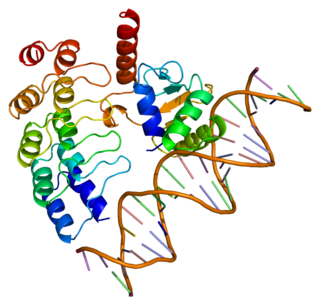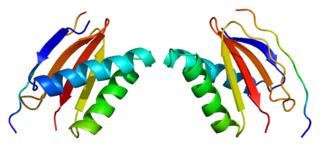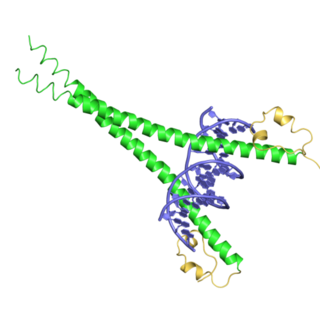Related Research Articles

Metallothionein (MT) is a family of cysteine-rich, low molecular weight proteins. They are localized to the membrane of the Golgi apparatus. MTs have the capacity to bind both physiological and xenobiotic heavy metals through the thiol group of its cysteine residues, which represent nearly 30% of its constituent amino acid residues.
Éditions Gallimard, formerly Éditions de la Nouvelle Revue Française (1911–1919) and Librairie Gallimard (1919–1961), is one of the leading French book publishers. In 2003 it and its subsidiaries published 1,418 titles.

South Africa’s National Research Foundation (NRF) is the intermediary agency between the policies and strategies of the Government of South Africa and South Africa's research institutions.

La Nouvelle Revue Française is a literary magazine based in France. In France, it is often referred to as the NRF.
The National Retail Federation (NRF) is the world's largest retail trade association. Its members include department stores, specialty, discount, catalog, Internet, and independent retailers, chain restaurants, grocery stores, and multi-level marketing companies. Members also include businesses that provide goods and services to retailers, such as vendors and technology providers. NRF represents the largest private-sector industry in the United States that contains over 3.8 million retail establishments, supporting more than 52 million employees contributing $2.6 trillion annually to GDP.

Nuclear factor erythroid 2-related factor 2 (NRF2), also known as nuclear factor erythroid-derived 2-like 2, is a transcription factor that in humans is encoded by the NFE2L2 gene. NRF2 is a basic leucine zipper (bZIP) protein that may regulate the expression of antioxidant proteins that protect against oxidative damage triggered by injury and inflammation, according to preliminary research. In vitro, NRF2 binds to antioxidant response elements (AREs) in the promoter regions of genes encoding cytoprotective proteins. NRF2 induces the expression of heme oxygenase 1 in vitro leading to an increase in phase II enzymes. NRF2 also inhibits the NLRP3 inflammasome.

Transcription factor JunD is a protein that in humans is encoded by the JUND gene.

Nuclear respiratory factor 1, also known as Nrf1, Nrf-1, NRF1 and NRF-1, encodes a protein that homodimerizes and functions as a transcription factor which activates the expression of some key metabolic genes regulating cellular growth and nuclear genes required for respiration, heme biosynthesis, and mitochondrial DNA transcription and replication. The protein has also been associated with the regulation of neurite outgrowth. Alternate transcriptional splice variants, which encode the same protein, have been characterized. Additional variants encoding different protein isoforms have been described but they have not been fully characterized. Confusion has occurred in bibliographic databases due to the shared symbol of NRF1 for this gene and for "nuclear factor -like 1" which has an official symbol of NFE2L1.

GA-binding protein alpha chain is a protein that in humans is encoded by the GABPA gene.

Dynein light chain 1, cytoplasmic is a protein that in humans is encoded by the DYNLL1 gene.

Kelch-like ECH-associated protein 1 is a protein that in humans is encoded by the Keap1 gene.

Transcription factor MafG is a bZip Maf transcription factor protein that in humans is encoded by the MAFG gene.

Nuclear factor erythroid 2-related factor 1 (Nrf1) also known as nuclear factor erythroid-2-like 1 (NFE2L1) is a protein that in humans is encoded by the NFE2L1 gene. Since NFE2L1 is referred to as Nrf1, it is often confused with nuclear respiratory factor 1 (Nrf1).

Transcription factor MafK is a bZip Maf transcription factor protein that in humans is encoded by the MAFK gene.

Transcription factor MafF is a bZip Maf transcription factor protein that in humans is encoded by the MAFF gene.

Krueppel-like factor 9 is a protein that in humans is encoded by the KLF9 gene. Previously known as Basic Transcription Element Binding Protein 1, Klf9 is part of the Sp1 C2H2-type zinc finger family of transcription factors. Several previous studies showed Klf9-related regulation of animal development, including cell differentiation of B cells, keratinocytes, and neurons. Klf9 is also a key transcriptional regulator for uterine endometrial cell proliferation, adhesion, and differentiation, all factors that are essential during the process of pregnancy and are turned off during tumorigenesis.

Nuclear factor -like factor 3, also known as NFE2L3 or 'NRF3', is a transcription factor that in humans is encoded by the Nfe2l3 gene.

Jeanne Galzy (1883–1977), born Louise Jeanne Baraduc, was a French novelist and biographer from Montpellier. She was a long-time member of the jury for the Prix Femina. Largely forgotten today, she was known as a regional author, but also wrote three novels early in her career that explore lesbian topics; she has been referred to as one of the "pioneers in the writing of lesbian desire and despair."
Small Maf proteins are basic region leucine zipper-type transcription factors that can bind to DNA and regulate gene regulation. There are three small Maf (sMaf) proteins, namely MafF, MafG, and MafK, in vertebrates. HUGO Gene Nomenclature Committee (HGNC)-approved gene names of MAFF, MAFG and MAFK are “v-maf avian musculoaponeurotic fibrosarcoma oncogene homolog F, G, and K”, respectively.

The republican insurgency in Afghanistan is an ongoing armed conflict between the National Resistance Front and allied groups which fight under the banner of the Islamic Republic of Afghanistan on one side, and the Islamic Emirate of Afghanistan on the other side. On 17 August 2021, former first vice president of Afghanistan Amrullah Saleh declared himself the "caretaker" president of Afghanistan and announced the resistance. On 26 August, a brief ceasefire was declared. On 1 September, talks broke down and fighting resumed as the Taliban attacked resistance positions.